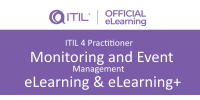Focusing on how you can manage assets to deliver services is at the heart of ITIL® 4’s workforce and talent management practice.
While workforce management concentrates on human resources delivering services, talent management ensures you have the right people with right skills – i.e. capabilities – for now and the future.
It also demonstrates well how ITIL has evolved from IT service management to enterprise service management.
In this instance, the human resources (HR) function is a business partner that understands needs, supports and delivers services to other parts of the organization to help conduct their business.
And this reflects the trend for enterprises becoming service-oriented organizations.
Satisfying today’s organizational demands
Businesses today need to have a holistic view of the talent they need and the balance to strike between hiring permanent staff and contractors.
Therefore, the workforce and talent management practice provides the necessary steps and structured approach for an effective employee journey.
When organizations achieve the goals of this practice it improves quality, reduces backlogs, avoids rework and increases speed to market. Ultimately, it feeds into organizational velocity – the speed, effectiveness and efficiency of the organization’s operations and how it outperforms its competitors.
For example, when organizations launch new products to address a market need, they need to have the human resources to make this happen successfully. The business can’t evolve if it doesn’t involve the right people with the right skills.
If people have a shared focus on value and understanding of organizational strategy, they will be the engine for perpetual transformation of products and services.
The workforce and talent management in practice
The need for greater standardization in a multinational company – managing staff across many countries via an enterprise resource planning (ERP) system – led to the organization using ITIL 4’s workforce and talent management practice.
For example, as part of a company-wide HR programme, the practice helped to define roles in the organization by their level of authority to approve supplier invoices. This inventory of roles was then connected with another system that matches invoices to orders. As a result, the company was able to improve its system of approving invoices and increase speed of purchase to pay, therefore reducing supplier complaints and improving relationships.
Another part of the programme was to create a central inventory of talent – in other words, tracking employees’ training and learning – to know who in the organization was available with which skills and knowledge. Along with knowing where the capabilities exist in the organization, it saves money by harnessing in-house resources rather than hiring contractors or consultants.
The workforce and talent management approach also helped to standardize the company’s approach to employee advancement and transfers between different business subsidiaries. Basing decisions on more standard procedures was important to improve employee morale and achieve a better allocation of resources.
Managing the human factors
As HR handles some of the most sensitive issues within an organization, defining principles based on roles, transparency and real data – and informing decision based on facts and fairness rather than favouritism – creates a different employee relationship.
Workforce and talent management within ITIL 4 addresses how people’s work relates to the objectives of the organization and keeps people motivated. Creating a higher level of employee satisfaction helps sustain their performance, which has a positive effect on service delivery.
Having access to this practice means that I can enable organizations to see the big picture and understand the logical steps they need to take to achieve their objectives – and it offers inspiration for any organization responsible for delivering services.
Source: Axelos Blog: David Billouz – CEO, Ociris








